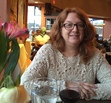K. Heidi Fishman's Blog, page 2
December 2, 2018
An Unnecessary Divide
We live in a time of labels and hyperbole and I don’t like it. Too many groups are being defined by labels that are then used to stereotype and marginalize. This tendency has been brought to my attention with two particular groups since my trip to Switzerland. The groups in question are the Poles and the Jews. I am not an expert in this area, but let me explain to the best of my ability.
Earlier this year the Polish government passed a controversial law that made it a criminal act to accuse Poland of helping the Nazis exterminate the Jews.* For example, this law made it illegal to call Auschwitz a “Polish death camp.” The truth is that Auschwitz was a Nazi death camp and it was located in Poland. The law is controversial because many people see it as an attempt to rewrite history. You can’t dictate history — what happened happened. But for many people the law is more than a controversy or an inconvenience. It affected careers. Historians were personally attacked for their research on Poland. And they sued for libel.
My understanding, albeit limited, of Poland during the Holocaust is that many, many people did horrible things. Germans** murdered Jews and Poles alike. Germans** set up a system of fear. Often people were faced with a choice of kill or be killed. Some Poles handed their Jewish neighbors over to the Gestapo or actively participated in their murders. At the same time, there were heroic acts happening in German-occupied*** Poland. People like Irena Sendler and Jan and Antonina Zabinski (The Zookeeper’s Wife) rescued large numbers of Jews, and many, many Poles sheltered their Jewish neighbors.
These same types of savage and courageous actions happened all over Europe. Some people chose to join forces with the Nazis. Others chose to resist. Many traded their morality for their own lives. Given some of the impossible choices people faced, I dare not predict what I would have done in similar circumstances.
When I went to Switzerland last month I briefly spoke with Polish President Andrzej Duda. I met Ambassador Kumoch and Honorary Consul Blechner. I met their staffs. I had many conversations with these Poles and I found them humble, honest, and warm. We were celebrating the fact that a group of six men — three Polish diplomats, Ładoś, Rokicki, and Ryniewicz, and three Jews, Kühl, Silberschein, and Eiss — worked together to save as many Jews as possible. They broke Swiss and international laws. They wrote letters to dignitaries around the world. They created false passports and sent them to Jews around Europe on the premise that the Nazis would use these newly anointed South Americans in trades for German nationals and POWs.
Since my trip to Switzerland I have seen nasty posts from both sides of this Jewish/Polish divide. Who is contributing to this name calling? Jews that are anti-Polish? Poles that are anti-Semitic? People who like to stir up trouble? Each group blaming the other for wrongs done to their people in the past. We need to stop lumping people into groups and identifying them by one characteristic. We need to stop looking at various people as “other.”
[image error]When my mother tells about her Holocaust survival she always talks about the false Paraguayan passport that saved her family. It turns out it was created by a group of men, Polish and Jewish, working together to save lives. My mother never knew where that passport came from. We only figured this out in the last year.
Right now there are historians around the world — Jewish, Polish, Swiss, American, Israeli — working together to understand the whole story of these passports. History isn’t static. It is still being discovered. We’re still finding truths that were buried in the rubble. My wish is that today we’ll discover that listening to each other and getting along is better than pointing fingers and fighting. My hope is that we drop the labels. And my goal is that together we can continue to uncover the truth — that all men and women are created equal and deserve a fighting chance at a decent life.
My interview with the Polish press corps
*A few months later the Polish government softened the law taking out the criminal penalties.
**After a few comments I realize that my original word here, Nazi, is offensive to some as it leaves out the fact that Germany created the Nazis. So I have corrected myself and changed the term to “German” twice.
***One more correction – Poland soil was no longer Poland at this time. It was occupied by Germany and was not being ruled by a Polish government. So “German-occupied Poland” may be more accurate.
November 18, 2018
Swimming to the Start
As I turned my head to catch a breath of air all I could see above water was the distant edge of the crater and sky. The infinity pool at Beresheet is situated on the cliff above the Ramon Crater, the largest makhtesh in the world.
The day before we took a Jeep ride into the makhtesh and our guide, Khen, explained how it was formed. Hundreds of millions of years ago this was an ocean. When the ocean receded, it left a hill. The hill’s interior was softer than its exterior resulting in erosion from the center. Over millions of years more and more rock was exposed so that the bottom rocks are over 200 million years old. The cliff walls, striped with color, show the primary mineral of each epoch.
[image error]
Millions of years of erosion
I took another stroke, another breath, another stroke, another breath.
As I swam my mind wandered or did it wonder?
Beresheet — בְּרֵאשִׁ֖ית — literally “in the beginning.”
Beresheet (בְּרֵאשִׁ֖ית) — the first word of the Torah.
Crater — not such a different word from creator.
I was swimming in paradise.
I had swum back to a time when there only was air and water.
An astonishing expanse, desolate and hot.
Heavens and water and earth.
And Hashem.
[image error]
Sunset from the Ramon Crater
November 10, 2018
A Story of Notarization
Dave asked me what I knew about the letter of notarization that accompanied the falsified Paraguayan passport. “Nothing,” I replied, “but I’ll see what I can find out.”
I looked again at the letter. The notary’s stamp was clear. I did some internet [image error]sleuthing and I found his son, Avner Herzfeld, living part-time in Switzerland and part-time in Israel. And with a bit more sleuthing, I was in touch with him.
Nothing much came of our initial contact, but then, a year later, I was on my way to both Switzerland and Israel and I asked him if we could meet. I wanted to show him the letter that his father signed, which helped keep my grandparents, mother, and uncle alive. I wanted to hear stories about this man who falsified a document to save a family of fellow Jews.
We decided to meet at Ben Gurion Airport upon our arrival in Tel Aviv. Avner Herzfeld, and his partner, Judy Navon-Dreyfuss, and my son, who is studying in Jerusalem, were there to greet Dave and me when we emerged from Israeli passport control.
The five of us sat in a crowded, noisy coffee shop in the arrivals hall. Amid discussions in Hebrew, Arabic, Spanish and French, we stuck to English and we shared stories.
Avner told me that his father, Ignaz, was an attorney in Basel, Switzerland, and a stickler for rules. Once, when he was traveling on a crowded train, the conductor didn’t have time to stamp his ticket so it couldn’t be used again before Ignaz had to disembark. Ignaz was so honest that after he was off the train, he knocked on the window to get the conductor’s attention and then he ripped his ticket in two, in effect cancelling his own ticket and showing the conductor his honesty.
Avner said his father never would have falsified any document, but in this case, morality was more important than legality and that must have been why his father notarized this letter.
We kept talking, trying to find the connection between the two families. How did Ignaz Herzfeld come to help the Lichtensterns? Did he know Egbert de Jong (I write about Mr. de Jong in Tutti’s Promise)? No. Did he work with the metal industry? No. Did he know Jakob Jorysch? Yes! Avner’s family was good friends with the Jorysch family, as was my grandfather! We found the connection — a common friend — who must have been the link for this notarization.
But I still have questions: Did Ignaz Herzfeld notarize other passports? Did the law firm keep the original passports? How did the documents get from the Polish legation to Ignaz Herzfeld, then to Egbert de Jong, and finally to my grandfather?
This story isn’t over — not yet.
[image error]
Avner Herzfeld, me, Judy Navon-Dreyfuss
October 22, 2018
Walking with the President
We bought lunch at a kiosk before boarding the bus from Zurich to Lucerne along with the passport survivors and their families. Michael Schudrich, Chief Rabbi of Poland, sat next to us and I took the opportunity to show him the documents I had brought with me. He closed his eyes and gave a visible sigh.
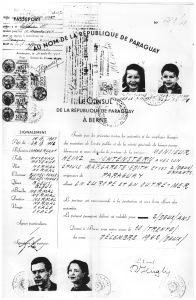
Lichtenstern Paraguayan passport
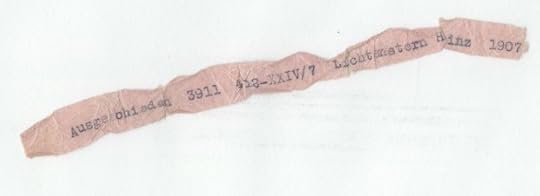
When we arrived at the cemetery Friedhof Friedental there was a buzz of activity: press, security, police. They were all preparing for the arrival of Andrzej Duda, President of Poland. Duda’s people gave us some basic instructions as to where to wait and how the afternoon’s events would unfold. Unfortunately the presidential motorcade was delayed so we were unable to spend time with President Duda before the ceremony as originally planned.
We did greet him and his wife, Agata Kornhauser, with handshakes and then walked together to the site of Konstanty Rokicki’s grave. Rokicki had died poor and was buried in an unmarked grave. The Polish Consulate spent months locating the site. They even compared the DNA of these remains with the DNA of one of his relatives to be sure they had the right spot.
There was a Polish honor guard. There were dozens of reporters and photographers at a respectful distance. Andrzej Duda knelt on one knee before the grave and arranged the sash of a wreath. Next Rabbi Schudrich spoke eloquently. He mentioned that a recent Torah parsha was from Genesis when G-d created Adam and Eve. The Rabbi went on to say:
We ask ourselves the question, what kind of person did G-d want us to be when G-d created them so many years ago? The answer is simple — G-d wanted us to be like Konstanty Rokicki — a person that was able to understand that morality was more important than even his own life.
I was as moved by his words as he was by my documents on the bus.
Then President Duda spoke and his translator repeated each sentence in English. He had no notes and he spoke authentically, passionately, and with respect for this Polish hero and the Jewish people. He noted that Konstanty Rokicki was a “brighter star in that black night of despair” that was the Holocaust. He also said that the Polish diplomats were “demonstrating humanity and this was all about the mission of saving human lives.” I couldn’t help but note that if not for Rokicki’s bright star the family Lichtenstern (my grandfather’s last name means “starlight”) would have been snuffed out completely.
[image error]
After the ceremony we all walked back to the reception area and I found myself side-by-side with Duda himself. I told him how the Paraguayan passport, produced by Rokicki, saved my grandfather’s life. I thanked him for being here and said that the most important thing to remember from all this is that humanity comes first. I intentionally used his words so as to capture his attention. I wanted to stress my message of the need to care for people above politics. I hope he heard me.
(To see a short video of the days events by Doran Gal click here)
[image error]
Agata Kornhauser-Duda, President Andrzej Duda, and me
October 18, 2018
Breakfast with the Ambassador
As we approached the Zürich Hotel Engimatt, I recognized Jakob Kumoch, the Polish Ambassador to Switzerland, just getting out of his van with his staff. We were early so Dave and I slowed our pace hoping to greet him inside instead of on the sidewalk. Mr. Kumoch turned around, saw us, said my name, and put his arms out to embrace me. The ambassador walked us inside to the reception introducing us to his wife, staff, the Hon. Consul Markus Blechner, relatives of Konstanty Rokicki and Aleksander Łados, and the families of other Holocaust survivors. We were all there to meet each other before going to the afternoon ceremony honoring Rokicki.
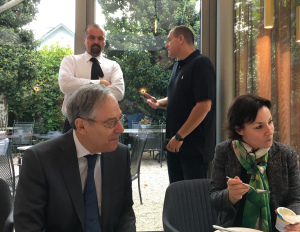
Ambassador Kumoch, unknown, Holocaust survivor Guy Kornblum, Johanna Kułakowska – Kumoch
You may be asking yourself, “Who was Konstanty Rokicki?” Recently Mr. Kumoch and his associates uncovered an archive that proves a joint Polish-Jewish rescue operation. During WWII the Polish government was in exile in London, but they maintained an embassy in Bern, Switzerland. Aleksander Łados, Konstanty Rokicki, Juliusz Kühl, Stefan Ryniewicz, Abraham Silberschein, and Rabbi Chaim Eiss (now known as the Bernese Group or the Łados Group) were purchasing blank passports from the Paraguayan embassy, filling in information of Jews and their families, and sending them to various ghettos and camps. Hundreds of Jews were saved in this way as the Nazis gave South American Jews preferential treatment with the plan of using them to exchange for German POWs. My mother and her family were partially saved by a passport that Konstanty Rokicki filled in with his own hand.
The passport survivors and their families at the breakfast in Zürich were from Canada, Israel, and the USA. Before WWII their families had lived in Holland, Belgium, Poland, and Germany. Very quickly the formal introductions turned into lively conversations with everyone exchanging stories about what they knew about their family’s Paraguayan passport, how they learned the story and, most importantly, how they survived.
[image error]I had brought with me several documents, including my grandfather’s Paraguayan passport and a letter of notarizarion stating the fake passport was real. I showed these documents to Ambassador Kumoch and the other Polish representatives and they were clearly moved. Over and over the same scene played out in the room: a document, a survivor, a family, a story. Here was proof — not just on paper, but living proof — that the Polish government of the 1940s had done something right. They had tried and succeeded in saving lives. The families here in this room represented Jewish life and the continuation of the Jewish people. Our stories were powerful and the ambassador listened to them with reverence.  When I showed Mr. Kumoch the small slip of paper my grandfather was given when he presented his passport and was withdrawn from the train to Auschwitz while approximately 1500 other Jews were sent to their deaths, he started to tear up and turned away to compose himself. His work over the last 18 months certainly was not as momentous as that of his predecessors, but he was grateful to be able to bring the story to light.
When I showed Mr. Kumoch the small slip of paper my grandfather was given when he presented his passport and was withdrawn from the train to Auschwitz while approximately 1500 other Jews were sent to their deaths, he started to tear up and turned away to compose himself. His work over the last 18 months certainly was not as momentous as that of his predecessors, but he was grateful to be able to bring the story to light.
[image error]
Małgorzata Sadkowska (relative of Rokicki), me, Judge Sebastian Ładoś
October 11, 2018
Visiting My Grandparents
My mother told me the code for the entrance gate. I reached out my car window and punched it in, but it didn’t work. Luckily, just at that moment a car exited the gated community. I put my foot on the gas and scooted in before the barrier bar closed.
My mother and I were in Sherman, CT where my grandparents once owned a house on Candlewood Lake. My grandfather had carefully chosen this place in case there was another war and New York became unsafe. Since WWII he always worried about and planned for the worst. This house was “in the middle of nowhere” yet only a few days walk from the city in case the family needed to escape.
Mom and I were graciously received by the current owners and they showed us around. The purpose for our visit, however, was less about Memory Lane and more about our wanting to retrieve something. We walked down the long hill to the lake and my mother picked up four small stones from the base of the tree where my grandfather used to sit for hours making business calls. He had actually installed a phone on that tree just for that purpose. I can still hear him shouting “hallo” to make his voice heard through the phone lines to Europe. Mom safely tucked away the stones in a ziplock bag which she passed to me.
[image error]
Three weeks later I landed in Switzerland. After finding our hotel and dropping off our luggage Dave and I walked to the outskirts of Zurich. The walk felt good after the cramped, overnight flight. Our destination was the Friedhof Am Schutzenrain – the small Jewish cemetery where my grandparents, Heinz and Margret Lichtenstern, are buried.
We found the place easily. It’s at the top of a short steep road across from small garden plots where city dwellers can grow vegetables. Beyond the cemetery there are open fields and walking trails.
Unfortunately, the cemetery gate was locked. I knew this would be a possibility. My mother had told me that the last time she was there, 25 years ago, the key had been kept in a mailbox of a nearby farmhouse. There were no nearby farmhouses. I tried calling the Liberale Judische Gemeinde (liberal Jewish community) but there was no answer. Their recorded message said to call another number but that one wouldn’t ring. Did I need to use a country code to dial a Swiss number from my U.S. phone while in Switzerland? A nice woman waking three dogs told us that if we went around the block (which meant going down the hill we had just ascended-across the hill-and up another steep hill) we could get in. Down, across, and up we went and, as she promised, the gate was unlocked. However this was the Orthodox cemetery and it was separated from the Reform section by a fence. I considered climbing over, but didn’t dare. Dave considered untwisting a portion of the fence wires – a bad idea.
As we searched for another way in, my husband suddenly heard a car door close and he carefully ran between the rows of graves to the edge of the fence where he could see two people talking by a parked car. “Hello!” he shouted. The man standing by the car didn’t speak English. Dave doesn’t speak German. The woman in the car got out to translate. Then the man ducked behind a garden shed and pulled the key out of a hidden mailbox. He waited for us while Dave sprinted, and I walked, down the steep hill- across – and up the other side. Finally we were in.
[image error] [image error]
We sat on a bench overlooking the peaceful cemetery while we caught our breath. I delivered the four small stones to my grandparents’ headstone, leaving a little piece of their safe, summer hideaway with them here on the Swiss hillside.
It is customary in the Jewish faith to leave a small stone on the headstone of a loved one.
[image error]I shed some unexpected tears remembering days at the lake with my Omi and Opi – walking down the big hill, swimming in the lake, huffing back up the hill at the end of the day, and the tearful parking lot good-byes at the end of the summer.
We had come full circle: hills, phones, tears, stones.
[image error]
September 22, 2018
Passport Update
In a few weeks I am going to a state ceremony honoring Konstanty Rokicki in Lucerne. I will be attending through an invitation from Ambassador Jakub Kumoch, who is the Polish Ambassador to Switzerland.
Who is Konstanty Rokicki? And how did I receive an invitation from an ambassador?
This is a long story and deserves much more than I will tell here today. If you have followed this blog or read Tutti’s Promise, then you know that the Lichtenstern family survived partly due to a false Paraguayan passport. It turns out that there were many of these false Latin American passports issued through embassies in Switzerland during the Holocaust.
The Nazis treated Jews with Latin American status differently than European Jews. If someone was lucky enough to be from Paraguay, Honduras, or Haiti the Nazis sent them to an internment camp instead of an extermination camp. They used these Jews as exchange prisoners for German POWs. Therefore, a Latin American passport meant a better chance for survival.
[image error]
Konstanty Rokicki
Konstanty Rokicki is the man behind the distinctive handwriting on my grandparents’ passport. He is the man who filled in the names, birth dates, color of eyes, shape of nose, and other descriptors of my grandparents. He didn’t do this just once or twice, or even a dozen times. Konstanty Rokicki filled out over 1,000 false Paraguayan passports that represented over 2,000 Jews (many passports were issued to married couples or families with children).
There was a group of men — heroes, who are now being referred to as the Bernese Group — who raised money, bought blank passports from Latin American embassies, filled out the personal information, had the documents signed by the various consulates (most of whom were happy to put money in their own pockets at the expense of desperate Jews), and then sent the passports to the Jews imprisoned in Polish ghettos and other places through occupied Europe. The members of the Bernese Group are as follows:
Aleksander Ładoś (1891-1963), Polish Envoy in Bern in the years 1940-1945
Abraham Silberschein (1881-1951), advocate, Zionist activist, pre-war deputy to the Sejm of the Republic of Poland, founder of the rescue committee RELICO
Konstanty Rokicki (1899-1958), Polish consul in Bern in 1939-1945
Chaim Yisroel Eiss (1876-1943), a merchant born in Ustrzyki, leading figure of Agudat Israel residing in Zurich.
Stefan Ryniewicz (1903-1987), counselor of the Polish Legation in the years 1938-1945, Aleksander Ładoś’ deputy
Juliusz Kühl (1913-1985), attaché of the Polish Legation, expert on contacts with Jewish diaspora in Switzerland.
(https://en.wikipedia.org/wiki/Bernese_Group, accessed Sept 22, 2018)
Konstanty Rokicki died, virtually unknown, in Lucerne in 1958. The history of his part of this operation to save hundreds and maybe even thousands has never been fully recognized. The current Polish Ambassador to Switzerland is heading the state ceremony to acknowledge Rokicki and has invited known survivors of the passports and their descendants to attend.
[image error]
I am looking forward to meeting other “passport descendants” and the Polish officials who have been tirelessly researching the “passport affair.”
I bought my ticket to Switzerland on line. It was very easy. All I had to do was plug in dates of travel and my desired airports for departure and arrival. I was given many choices as to airlines, flight times, layovers, etc. I typed in my credit card information, personal information, and my passport number. I will be printing my boarding pass at home before heading to the airport. So easy! Travel and identification was more complicated in the 1940s, especially if you were a Jew living in Europe.
For more detailed information about Konstanty Rokicki and the “passport affair” please read the following article: Lecture by Polish Ambassador to Switzerland, Jakub Kumoch, delivered on 4 February 2018, at the Shoah Museum in Paris
May 20, 2018
Vote of Confidence
I have been traveling to Connecticut a lot. I don’t mind. All the hubbub around Tutti’s Promise gives me an excuse to visit my parents. When people ask me about driving down to Southern New England I say my parents like it when I visit – but the truth is I like the visits too.[image error]
One event I was unable to attend recently was the University of Hartford’s Maurice Greenberg Center for Judaic Studies awards evening. I was actually given another vote of confidence on May 7th. I would have liked to be there, but it wasn’t possible.
This year has been an amazing year for Tutti’s Promise and awards. I have to admit that I have been surprised and thrilled. I started this whole project reluctantly. I wasn’t sure I could write a book that was good enough to share. I didn’t have a writing background. I had avoided history classes. And I was way out of my comfort zone.
Nevertheless, I persevered. I applied my liberal arts education. I took community college classes. I went to workshops. And I was willing to rewrite and rewrite and rewrite.
Tutti’s Promise has been a hit. Two silver Benjamin Franklin Awards from the Independent Book Publishers Association, a Silver Nautilus Book Award, designation as a Notable Social Studies Book, and now the 2018 Joseph Zola Memorial Professional Development Award.

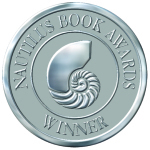
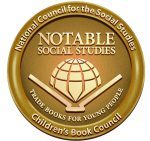
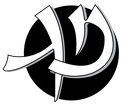
This last award is for my newest project — Tutti’s Promise: Lesson Plans
Tutti’s Promise was written with teachers and students in mind. It tells the true story about a child who survived the Holocaust. When students read the book they relate to the protagonist and feel empathy for people who are persecuted for no other reason than accident of birth. This project will help make Tutti’s Promise an even more useful classroom addition to both middle schools and high schools around the country.
While my website contains a plethora of information, one very important page remains blank. This is where I plan to provide lesson plans to be used with the book. I envision this page full of materials that show how to integrate Tutti’s Promise with anti-bullying, English, and history curricula. Ten states now require Holocaust and genocide education — with Connecticut being the latest. I want to congratulate the folks in my home state who worked so hard to pass this legislation. There are groups in more states that are advocating to include these topics in their state education standards as well.
Teachers — you have told me you love the book. You tell me your students love the book. Now I’m asking for your help. It is your turn to make a valuable contribution to Holocaust education. I invite you to send me your ideas and lesson plans. How did you use Tutti’s Promise with your class? What discussions were most valuable? Did you organize any projects around the text? I have confidence in you that together we can build a website to help other teachers with this important and difficult topic, and through these lessons, teach young people resilience, acceptance, and how to make their worlds more peaceful places in the future.
April 30, 2018
Nautilus Silver Winner
More exciting news for Tutti’s Promise!
Nautilus Book Awards has announced that we won Silver in Middle Grades Fiction.
Now completing its 20th year, Nautilus Book Awards recognizes books that transcend barriers of culture, gender, race, and class, and promote conscious living & green values, spiritual growth, wellness & vitality, and positive social change.
Thank you Nautilus for including Tutti’s Promise in your very special family of books that are trying to make the world a better place.
[image error]#NautilusBookAwards #Nautilus #TuttisPromise #BookAwards #MBPublishing #Holocaust #Genocide #Education #BetterBooksforaBetterWorld #SSchat
April 12, 2018
Yom HaShoah 2018
[image error]Over a year ago a classmate from Loomis-Chaffee, Jim Rice, invited me to come speak at his congregation. This week that invitation came to fruition as I spent three days at Temple Beth El in Bloomfield Hills, MI.
My visit started with a lovely lunch and a tour of the building. Temple Beth El is a beautiful space filled with so many friendly people. The Education Director (Debbie Morosohk), the Curator/Librarian (Laura Williams), Rabbi Mark Miller, Rabbi Megan Brundey, [image error]Cantor Rachel Gottlieb Kalmowitz, Security Personnel (Ken Jackson and Morris Collins), and Maintenance Personnel Victor Aguilar all made me feel as if I was a long missed friend who had returned after some time away.
I had the good fortune to meet many people in various venues. The teen group, that was learning about the Holocaust, listened politely as I explained how I unearthed my family’s story. The attendees at the book club meetings were filled with interest, questions, and stories of their own.
[image error]
The Yom HaShoah/Holocaust Memorial Day service was the highlight of my visit. I told a shortened version of the Lichtensterns’ plight during the years from 1935-1945 while the congregation listened with head nods, knowing smiles, and a few tears. The service that followed was filled with just the right mix of sadness and hope. Cantor Rachel’s voice filled the chapel with a haunting sound as she sung Eli Eli and congregant Ken Posner followed with a rousing voice that called on a sense of resistance to evil as he sung The Partisan’s Song in Yiddish. Jordan Broder (whom I need to track down to see if he is related to Leon Broder – one of the “Metal Jews”) played a heartfelt rendition of Schindler’s Theme on the violin. The entire congregation joined in for the Mourner’s Kaddish in which the names of many of the death camps were inserted. I had never heard the Mourner’s Kaddish recited in such a way and my throat caught as I said “Theresienstadt,” “Birkenau,” “Bergen-Belsen,” and other places of torture, murder, and death. Rabbi Miller explained his choice of ending the service with the song Am Yisrael Chai. We all joined Cantor Rachel while she pounded her fist on the bema and our voices became louder, and more insistent, as we sang out words of hope.
Am Yisrael Chai, עַם יִשְׂרָאֵל חַי
Od Avinu Chai עוֹד אָבִינוּ חַי
The people of Israel lives!
Our G-d yet lives!.
If you would like to watch the service, it is available by clicking here.
(Please note the sound doesn’t pick up correctly until 3:45 into the video.)

